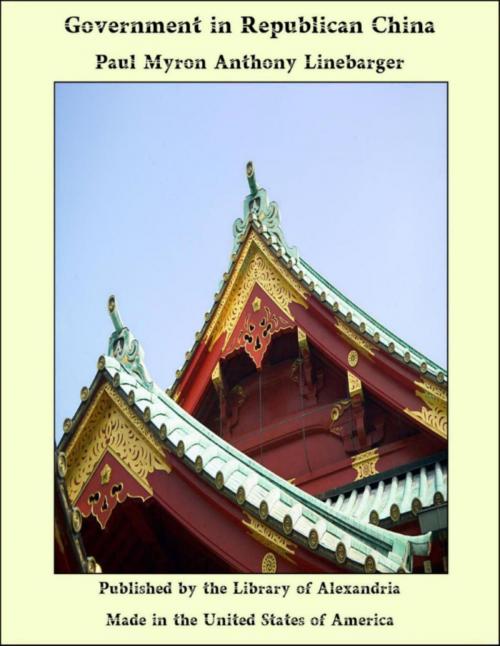Government in Republican China
Nonfiction, Religion & Spirituality, New Age, History, Fiction & Literature| Author: | Paul Myron Anthony Linebarger | ISBN: | 9781465583611 |
| Publisher: | Library of Alexandria | Publication: | March 8, 2015 |
| Imprint: | Language: | English |
| Author: | Paul Myron Anthony Linebarger |
| ISBN: | 9781465583611 |
| Publisher: | Library of Alexandria |
| Publication: | March 8, 2015 |
| Imprint: | |
| Language: | English |
The origins of Chinese society may reach half a million years into the past. Anthropologists have suggested that Sinanthropus Pekinensis, among the earliest forms of man, resembles the modern Chinese more closely than he does any other modern race. In what specific period the earliest ancestors of the Chinese came to China is not known. It is certain, however, that about 1500 b. c. there existed a well-developed civilized society in the Yellow River valley, and that this same society has lived on—modified by the centuries, but in unbroken continuity—down into the present. China has outlasted Crete, Tyre, Greece, and Rome. The Aztec empire, which arose in Mexico when China was already ancient, has become only a memory, while China is still vital. How is it that China's institutions survive, while those of other nations did not? How real are Chinese institutions today? What, precisely, is the Republic of China?
The origins of Chinese society may reach half a million years into the past. Anthropologists have suggested that Sinanthropus Pekinensis, among the earliest forms of man, resembles the modern Chinese more closely than he does any other modern race. In what specific period the earliest ancestors of the Chinese came to China is not known. It is certain, however, that about 1500 b. c. there existed a well-developed civilized society in the Yellow River valley, and that this same society has lived on—modified by the centuries, but in unbroken continuity—down into the present. China has outlasted Crete, Tyre, Greece, and Rome. The Aztec empire, which arose in Mexico when China was already ancient, has become only a memory, while China is still vital. How is it that China's institutions survive, while those of other nations did not? How real are Chinese institutions today? What, precisely, is the Republic of China?















